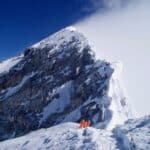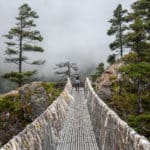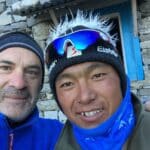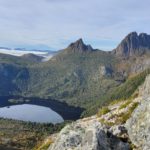Fitness. It’s the number one concern for those dreaming of a hike in the Himalayas.
Just the thought of dragging yourself up and over endless hills can defeat you before you even begin.
But there lies the key to success.
It’s your mind which will play the biggest role in your success, not your body.
Let’s use the famous Everest Base Camp trek as a test case.
It’s a hike that has seen the fittest fail and elite athletes fall short. All while average Joes and Janes reach their goal of standing at the foot of the world’s tallest mountain.
Why peak fitness doesn’t mean peak performance
Often success comes down to attitude and a little strategic thinking.
If you’re a football fan you might have seen players run onto the ground with a message to themselves written on the back of their hand.
A reminder of what they need to do to succeed.
‘Chase. Tackle. Run.’
Well, the three words to help you achieve your goal on the Everest Base Camp trail, or any trek for that matter, should be:
‘Persistence. Positivity. Patience.’ (or ‘P+P’ if you have small hands).
Persistence is the ultimate act of resilience.
When (not if) you’re challenged on the trek, you’ll need to dig deep and take that extra step.
That’s an act of mental strength, not physical strength.
With persistence you’ll achieve what you’ve set out to do and inspire others in the process.
A positive attitude doesn’t just affect your mental state. It will take your body further.
In tough times a shared smile and a touch of dark humour could be all you need to forget about your aching legs or heavy breathing.
And, with a positive attitude, you’ll never be short of friends on the trail.
Watching trekkers, porters and even yaks disappear into the distance as you fall behind can be disheartening. Don’t be hard on yourself, be patient instead.
Rest assured you’ll have plenty of time to reach your daily destination so there’s no need to worry. Just go at your pace and soak in your surroundings. After all, you’ll be back in the rat race of home life before you know it.
Is fitness a disadvantage?
No. But it does seem illogical that ultra-fit athletes could struggle while people of average fitness may not.
Once again it comes down to mindset.
All the traits that make athletes successful at home: competitiveness, speed, a will to win, can work against them in the high mountains of Nepal.
Your body needs time to acclimatise to the thinning air. The slower you progress along the trail, the more chance your body has to adapt to its new environment.
If you don’t give yourself time to adjust, you’re at risk of headaches, nausea, sleeplessness, loss of appetite – all the symptoms of altitude sickness.
Altitude sickness can result in death. More common, it ends the dreams of trekkers aiming for Everest Base Camp.
Many trekking companies don’t allow enough time in their itinerary for rest days, or poorly manage their clients’ health. Daily health checks reduce your risk of falling victim to serious altitude sickness and increase your chance of success.
Whatever your walking pace at home, halve it. You’ll enjoy your walk more and recover better.
Do I need to train?
Of course. Physical preparation is important. You can’t expect to peel yourself off the couch after a years-long Netflix binge and expect to be in good shape.
You’ll need to train for long days on the trail.
Resilience Builders’ free Trek Ready 100 Day Health and Fitness Plan is a fantastic resource to guide you. It contains a suggested exercise program and healthy eating guide.
So now we’ve busted the fitness myth, what’s stopping you?






